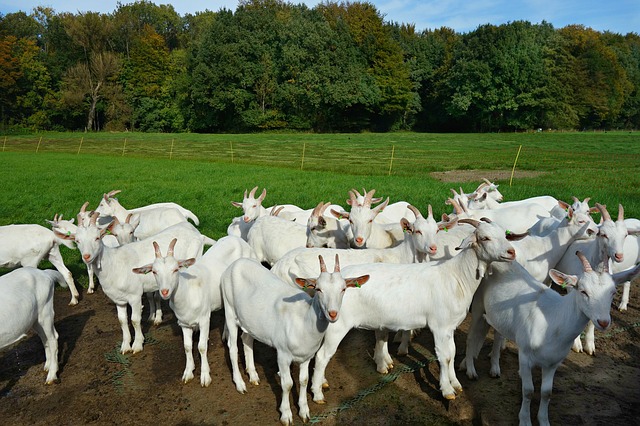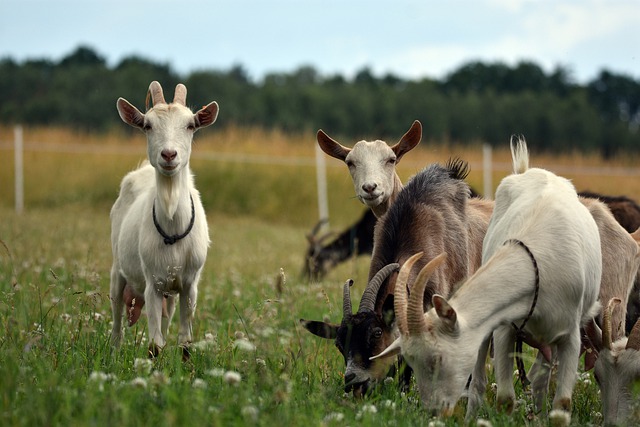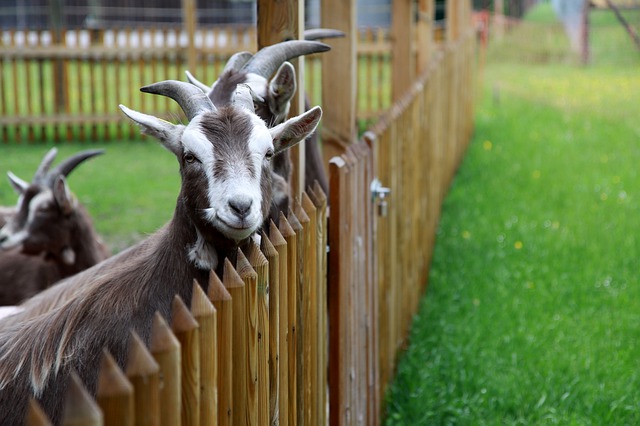Goats are one of the most important livestock in the world. Goat farming is one of the main sources of income for the poor in various countries. Goat farming profit business and it can be done with low cost, relatively low maintenance, and small space. It has proven to be a profitable business even with a small investment. A goat has become 15-20 kg in just 12-15 months and its meat is very tasty. So there are huge demands for mutton in the market. In this post, we will discuss the types, benefits, management, and business ideas of goat farming.
#What Is Goat Farming?
Goat farming is the type of cultivation where the farmers do this for commercial purposes. Mostly the farmers do this farming for skin, milk, and meat purpose. It belongs to cattle farming. In goat farming, well-trained farmers needed to manage the farms and goats. Goats are members of the Bovidae family and the Caprini subfamily, meaning the animal is related to sheep. There are more than 300 species of goats. Goats are one of the oldest domesticated animals that belong to the Capra Aegagrus Hircus. Though goat farming profit many businesses and bring positive fortunate to many farmers.
# Types of Goat:
There are many varieties of goats around the world. Some of these varieties are famous for their flesh and some reproduction and milk. Many people keep the goats on farms. There are about 300 species of goats in the world. These are different and different from each other in size, volume and characteristics. Calls usually keep the goats for milk, meat, breeding, and skin. If the farming is observed for business, good varieties of goats should always be used. Here are some types of goats:
1. Beetal Goat:
Beetle varieties of goats are basically found in India. These varieties of goats are also available in some areas of Pakistan adjacent to Punjab. Their garments are observed in white color spots or black colors. They can give milk to 2.5-4 liters per day. Physical weight is 45 kg and goats for 45 kg for goats.
2. Black Bengal Goat:
These varieties are available in the subcontinent of Asia. Usually gives the first baby at the age of 12-15 months. Although a kid was born twice a year, there may be 2-8 children from a goat in the appropriate management. 20 kg of physical weight is available at least 11 kg of flesh from a goat and weighing 1-1.4 kg of 1-1.4 kg. Black Bengal Goatskin is a very valuable subject.
3. Barbari Goat:
Barbari is basically available in Central and West Africa. These species of goats are also available in Agra, Mathura, and adjoining areas of Uttar Pradesh. Physical weight is 30-35 kg of goats and 40 kg for goats. 4 kids can be born in a year. This variety of goat can give milk to 1 kg every day.
4. Boer Goat:
Boer goat is mainly developed in South Africa. It looks like a throat goat and is available in many countries now. The boer goat farming is mainly done for meat and breed production purposes.
5. Jamunapari Goat:
The head of this local goat is big. Generally, these goats are reddish. But they can be another color. Its ear length is about 25 centimeters. These varieties of goats are tall. The weight of this goat can be up to 120 to 90 kg. Every day the amount of milk is near two liters.

#Methods:
There are four types of methods available for goat rearing:
1. Rearing Like A Family:
In this process, two or five goats are kept for family rearing and those may be female goat or local goat. This method is easy and cost-effective. For goats, rearing doesn’t need any extra grass in the bush. No separate accommodation is required for this method. In various countries, most of the farmers leave the goats in the field or tie them in the field and feed the grass in this way. For that, any additional manpower to raise a goat isn’t required. However, if goats are left in the field, there is a possibility of crop damage in many cases. For good production, the farmers need to supply granular foods.
2. Rearing Freely:
In this farming method, usually 8-10 goats are reared on the farm. They are mounted in the field during the day and bought home in the evening on fenced land on hillsides, ponds, roadsides, or in field areas that are unsuitable for cultivation. In this method, throat goat rearing does not provide any extra grass. Therefore, it is not necessary to cultivate grass separately to raise local goat in this method. They have to use granular food at night. This method requires at least one person to raise goats.
There are many places for goats to roam in the charred area, the disease is less here, so the cost of food and maintenance is also comparatively less than in other places. In the present socio-economic content, is almost impossible to raise female goat in this manner in most parts of various countries.
3. Semi-Intensive Method:
These farms usually keep 15-20 or more goats at a time. In this method like free goat farming, goats are kept in the field during the day and brought home at night, and kept in captivity. The farmers must give them grass and granular food as supplementary food to provide them with essential nutrients. Since goats are reared on a commercial basis in this method, it is possible to take appropriate measures regarding the nutrition, breeding, and health of the goats.
In the current socio-economic context, this method is especially useful for commercial goat rearing. However, in this case, the cost of production and investment is a little higher. Since a large number of goats live together, the incidence of various infectious diseases such as skin diseases, eczema, diarrhea, etc.
4. Intensive Method:
Goats are reared in the confines of these farms, so the required numbers of goats are reared according to the shed and management of the farm. In this method, all the necessary grass and granular food are provided to the goat shed. High-yielding necessary grass is cultivated on the farm to supply grass. Since goats are reared here on a commercial basis, it is possible to take special care of the nutrition, breeding, and health of the goats. More goats can be farming in less space and it is mainly for meat goat farming. However, the initial investment and production cost of the farm is relatively high.
With a large number of goats lives together, the incidence of various infectious diseases may be higher. In various countries, farmers do not like to keep in captivity so goats should not be kept in captivity along with the collection. First, graze the goats for six or seven hours and provide adequate feeds for the rest of the rest. Thus the grazing time should be reduced to 1 or 2 weeks and kept in a completely closed condition.

#Managements:
To fulfill the goat cultivation successfully, you must consider basics knowledge before the start of the goat’s farm. Some information about goat rearing management is discussed below:
1. Select The Proper Goat:
The evaluation of goat variation is a matter of great importance. The next important thing is to consider the selecting proper goat when you start this farming. According to your purpose, there is a type of goat that produces more milk and also grows rapidly. You can cultivate both species and you collect both meat and milk. Various varieties of care need different levels. Make your research and consult with an expert so that he can help you decide what will be the best for your firm.
2. Goat Farm House:
The most important consideration of you first is the goat’s house. The goats can usually survive in warm or spray areas. The temperature required space. The goat is in the group, so the individual enclosure is not effective. If you want to keep your animals can freely walk, then a large set is needed. Free movement of goats is usually good to prevent illness and disease infection. The goat farms should be away from the city because urban pollution is dangerous for the health of air organisms.
3. Health:
Your goats must keep healthy and stronger. Create big accommodation because the goat is in the squad. They must be given the opportunity to roam, and have fun. If the goats grow well in good places they are rarely ill and they usually produce good milk and meat. Make sure that they give enough clean, fresh grass so that they are not sick.
4. Green grass:
For goats eating arrange for them Ipil-Ipil, jackfruit leaves, khesari leaves, Scutch grass, etc. that are nutritious enough. If the availability of domestic grass is less, the advanced varieties of Napier, German Grass can be cultivated. It can be fed or fed to the goats by cutting or grazing.
5. Reduce Goat Disease:
The goat love to stay in a clean environment. Their housing should be made airy. Goats always like dried and high places. You should take care that they will not affect by the cold. Because of winter, they are affected by pneumonia and other complex diseases. So the winter is to spread straw on the floor. In winter, the goat will be dragged on the wall of the house to protect the goats from the cold.
#Benefits:
Goats play a very important role in acquiring meat production and foreign currency to reduce unemployment problems or poverty. So the goats may also be a profitable business. Let’s know about the benefits of goat farming:
1. Easy Maintenance:
The farmers can easily maintain goats for their small shapes. Other family members like women and kids can take caring the little-sized animals. Only one person can do the job of feeding, caring, and milking the goats.
2. Huge Demand on the Market:
The goat’s meat and milk are filled with nutrient ingredients and easily digestible. So there are huge demands for goat meat on the market. For that goat, rearing is the main financial source of poor farmers who live in urban areas.
3. Low cost:
Goat farming required a low cost for overall maintenance. You don’t need to buy equipment, hire labor, and do hard work. The first time, you need to invest in buying goats and after that, you get all returns with huge profits.
4. Farmers Don’t Need Huge Areas:
For this farming, the farmers don’t need huge areas to build the farmhouse for this animal. As the goats love to live in a group and small size is an advantage for that. Besides, it is very suitable to mix with other domestic animals in one place.
5. Less Risk:
The rearing of goats is less risky than other animals. With some caring and maintains farmers can earn a good amount of money. And also the market price of goat meat stays the same. Besides, it helps to reduce unemployment.

#How to start goat farming business?
In the beginning, most farmers want to know how to start goat farming business with easy process and low investments. The business of Goat farming in USA is increasing randomly for their modern farming technology. With important tips, any farmers can improve their business. So let’s know what are the tips to start a profitable farming business of goats?
1. Business Strategy:
The farmers need proper strategies to start this business. The focus on the breeding farm is a better quality, healthy vigorous baby production. In that case, you must collect advanced varieties of the parent stock. It is best to collect cross brood parent stocks for breeding farms.
2. Breeding Farm:
For new entrepreneurs, it is so easiest to build a breeding farm for goats. It is possible to achieve more profit in low management on the farm. The main product of the breeding farm is the goat’s baby. The farmers can market the baby goats after three months of their birth.
3. Goat Fattening:
Goat fattening is very important to get success in this business field. For that selecting the best quality goat plays a vital role. Disease-free goat selecting is very important, feeding, taking care is needed for goat fattening.
4. Tagging:
Tagging is very important to identify each animal differently. The animal identifies, caring, treatment is easy to be treated with this tagging.
5. Marketing:
If the child is two months old, it will be completely diverse from the mother. The child needs to give worms. As well as the green grass, it will give 60-75 grams of corn and wheat as a grain meal. Vitamin premix can be mixed with. This will increase the child’s appearance and weight. In fatty stains, the child will have to emphasize the child’s food management until the age of two months and after that, you can start marketing.
